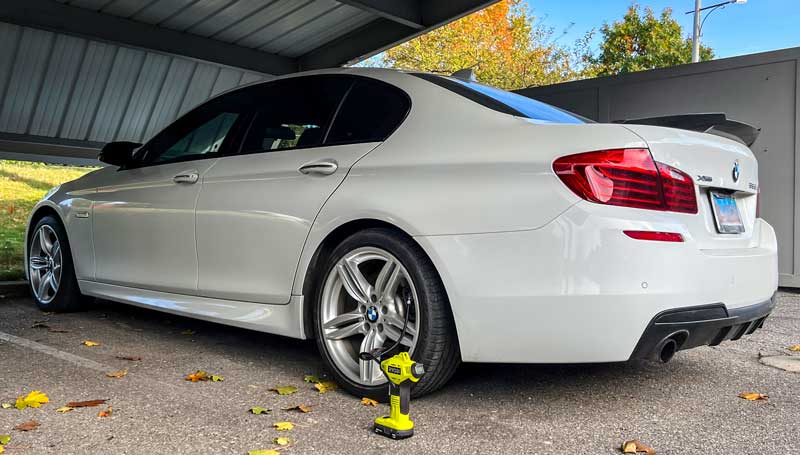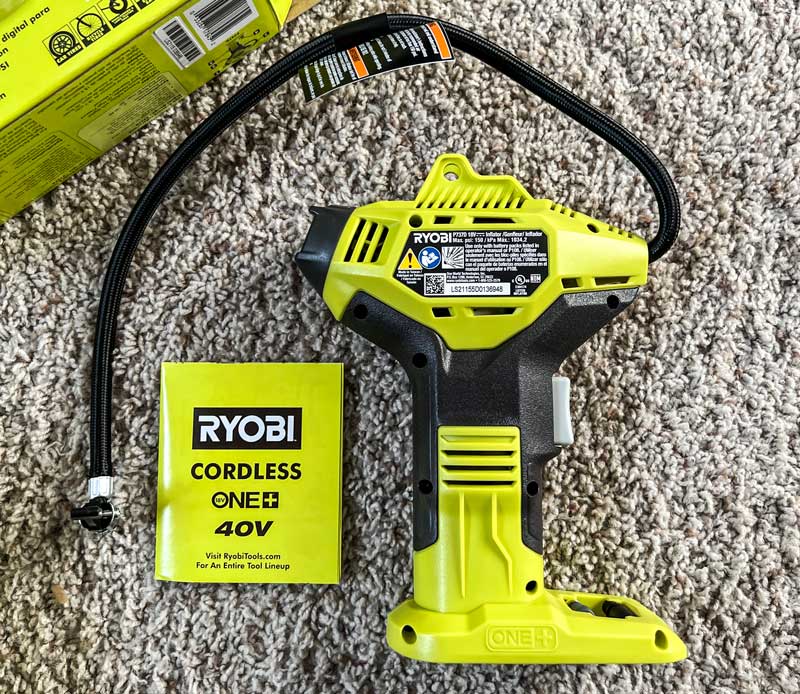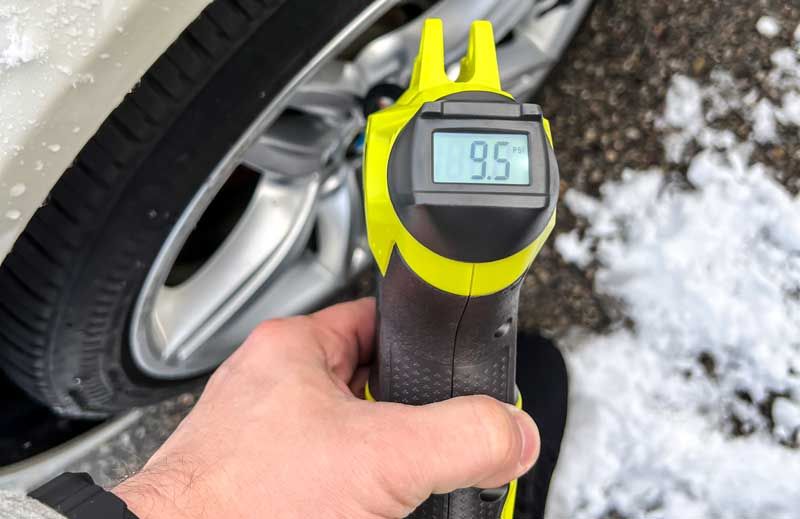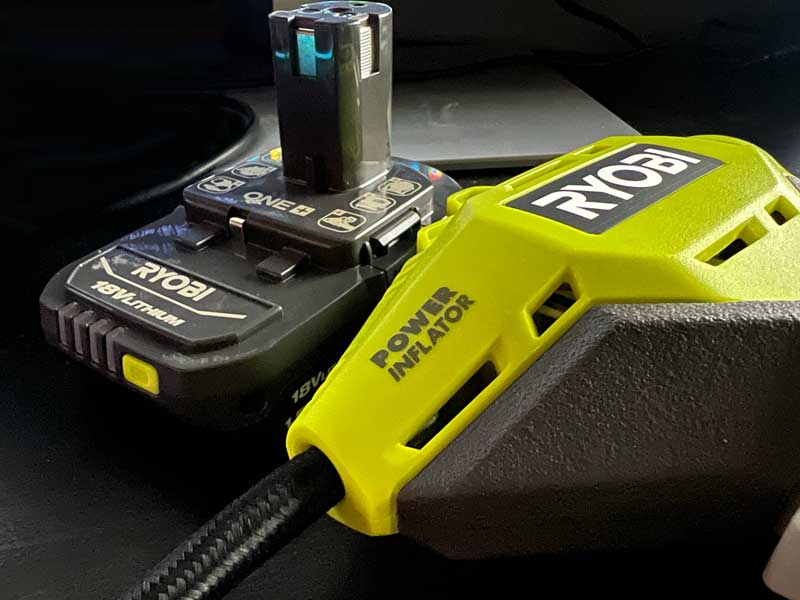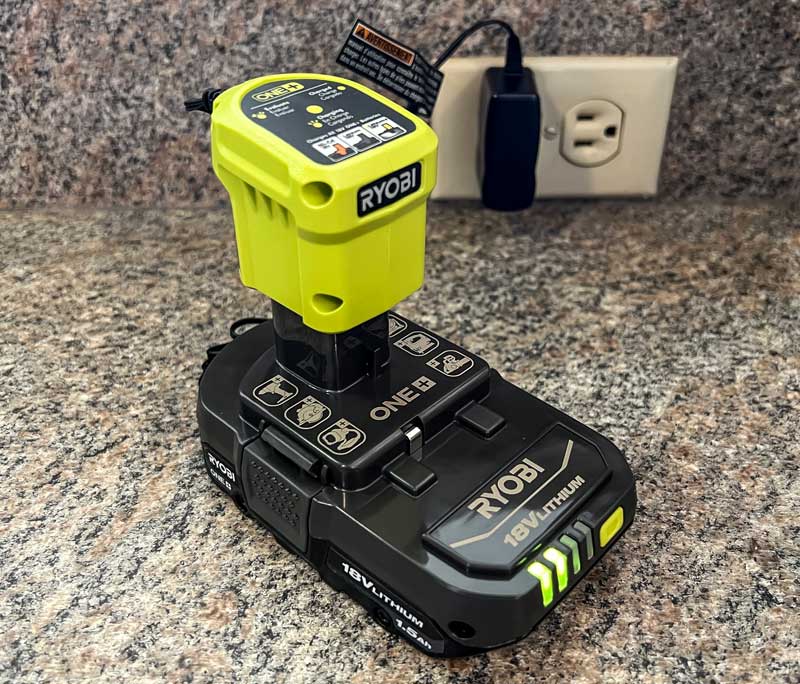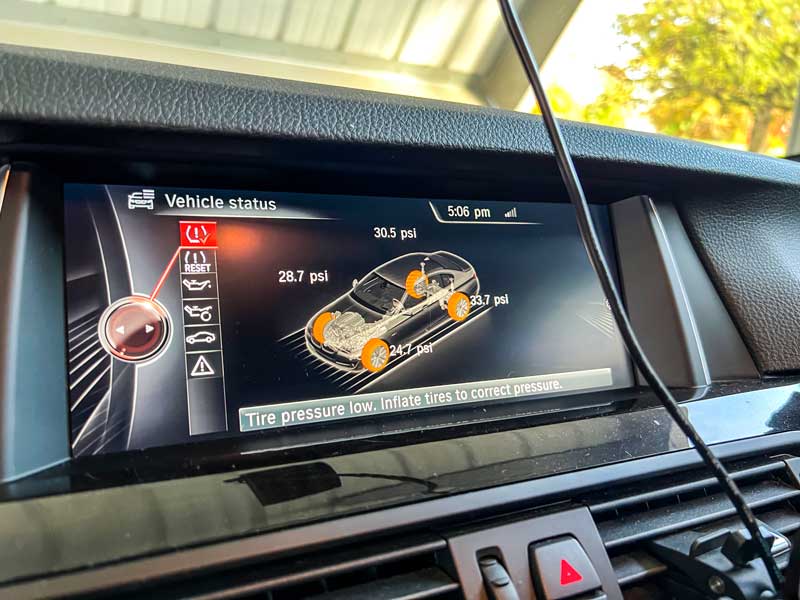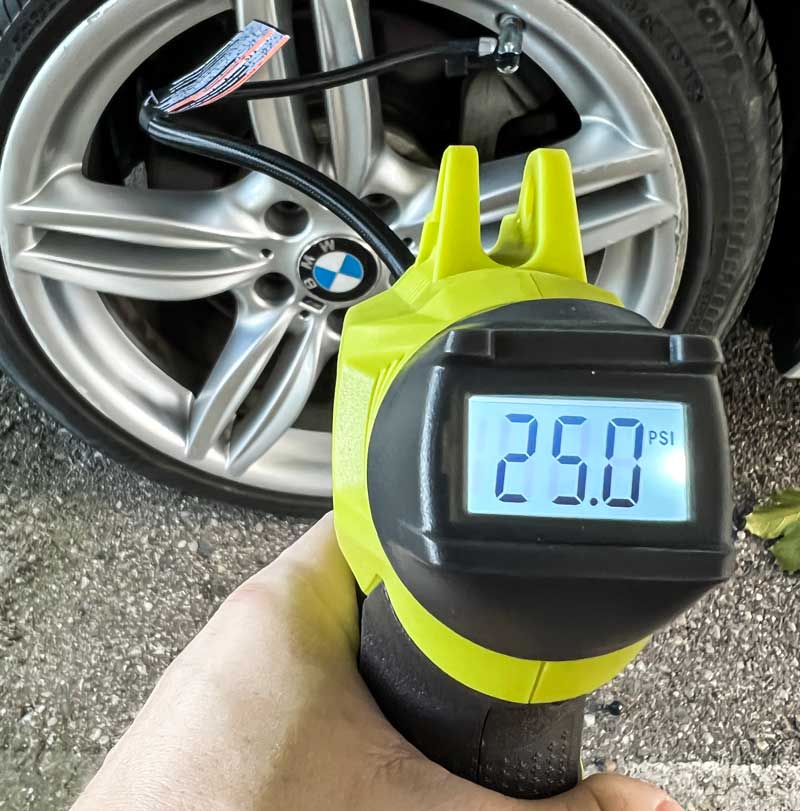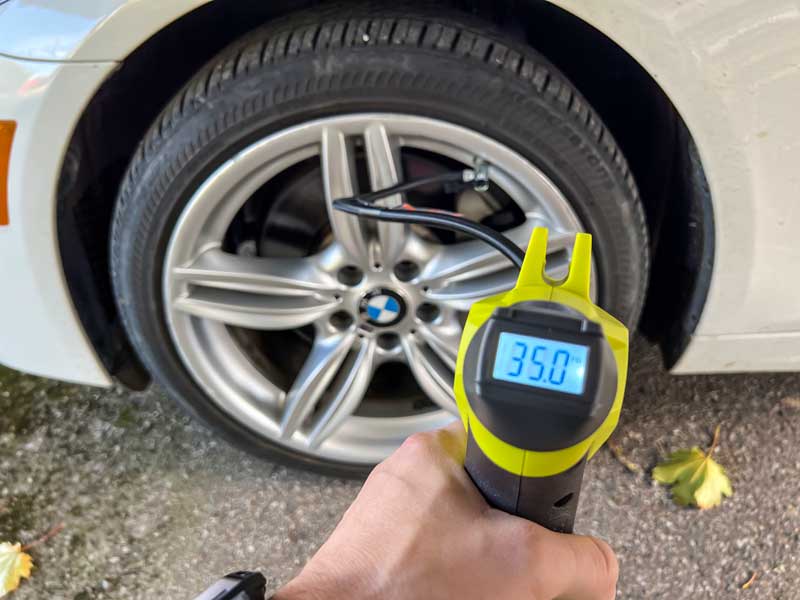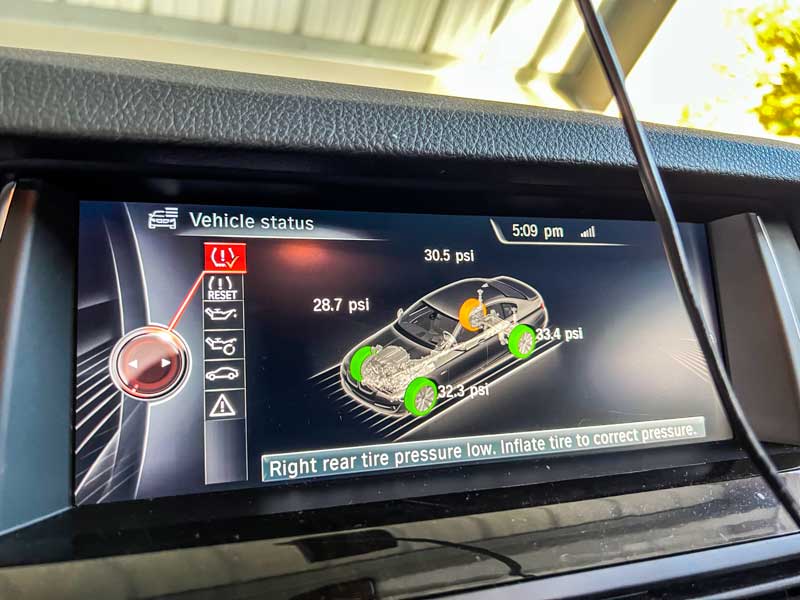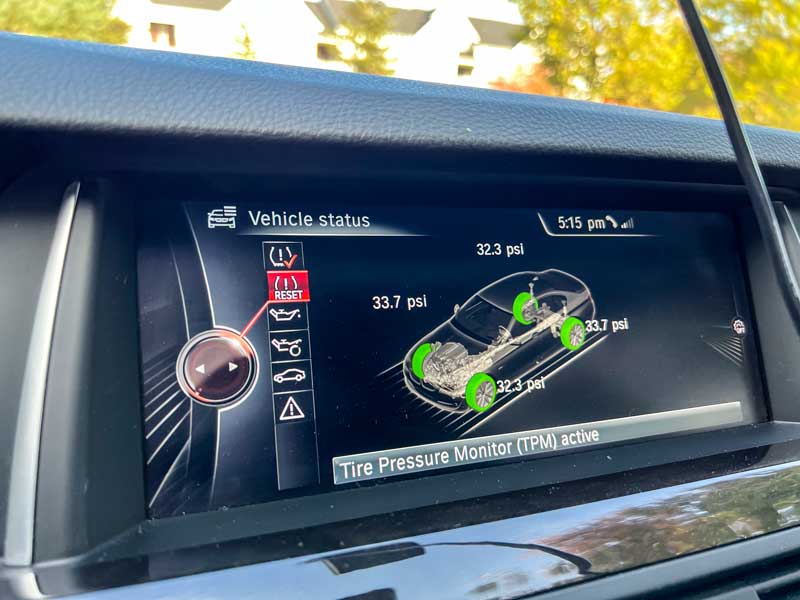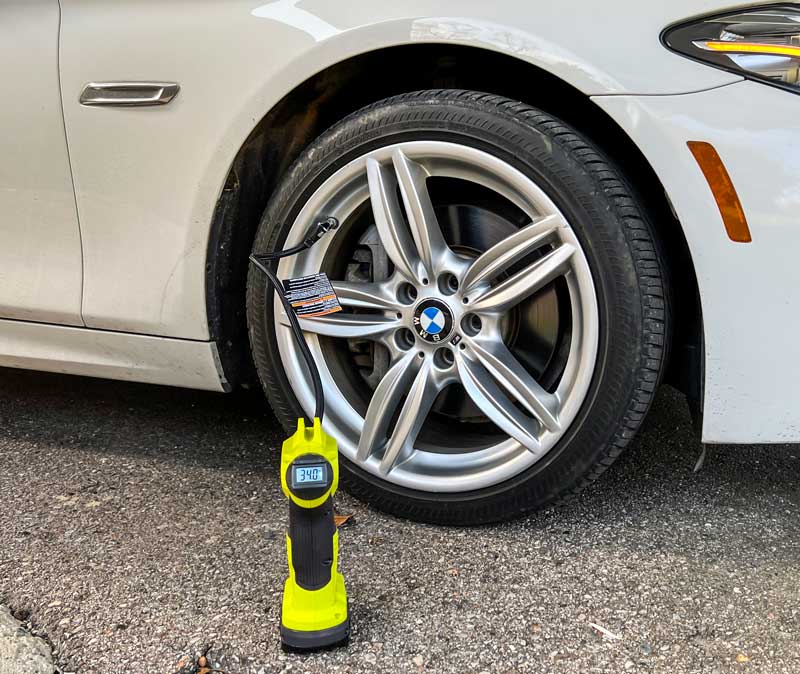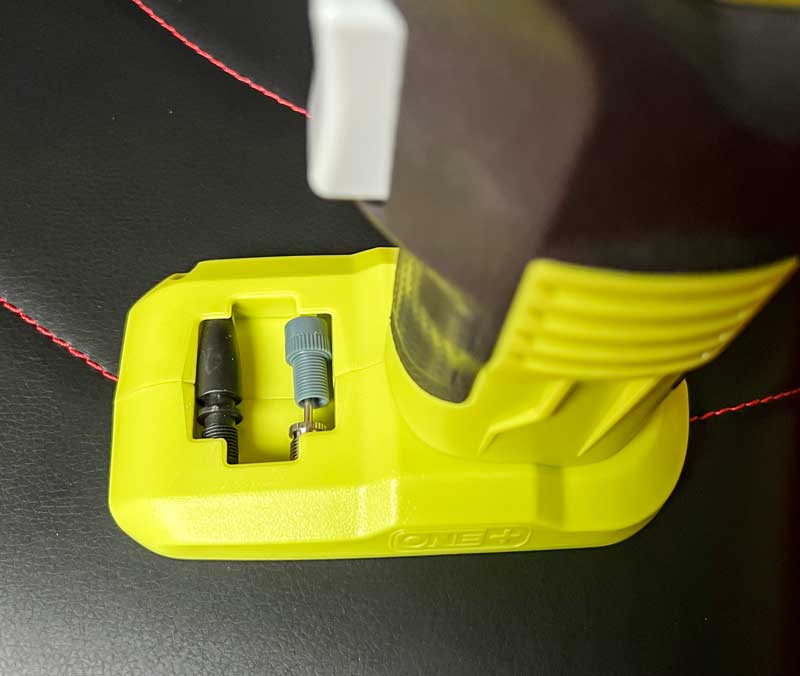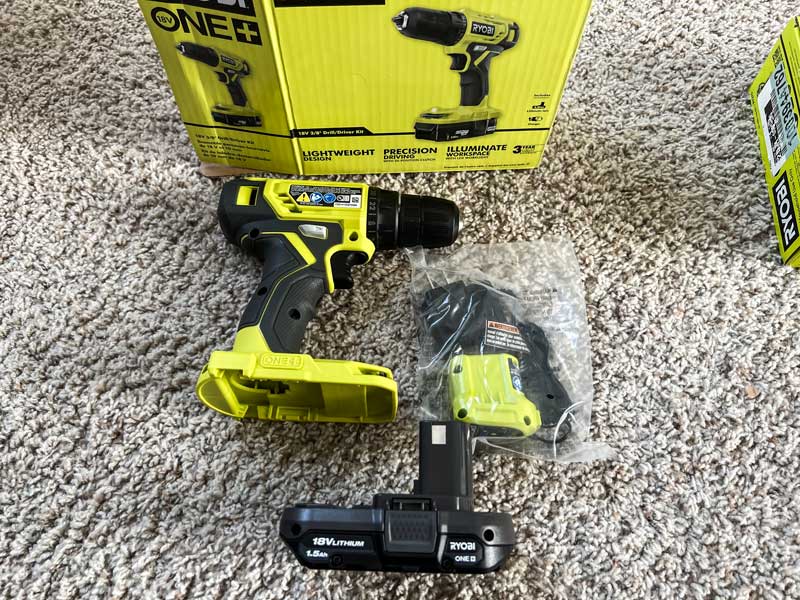Some of the links on this page may link to our affiliates. Learn more about our affiliate policies.
Last Updated: December 18, 2023
I was recently on a mission to clear all the warning lights from my BMW iDrive system. After spending a lot of money on replacing the headlight and the module, I still had one light: the low tire pressure warning light. Since it's not ideal for keeping spending $2 each to fill up my tires with air, I decided to find myself the best tire inflator that would be cordless and would not break the budget. The final winner of this journey was the Ryobi tire inflator - The One+ 18V Portable Model P737D.
You might ask why I would keep inflating my tires instead of replacing them. It's for cost-saving reasons and getting every penny's worth. I got my tires checked, and they are in great shape thread-wise. They were put on my car before I purchased it and are the BMW run-on flat tires. So whenever I get the low tire pressure warning lights to come on, the tire pressure is never below 22 PSI; I'm assuming it's because the sturdy sidewall doesn't let the car sink more and push the rest of the air out.
What is a Portable Tire Inflator?
A portable tire inflator can be used to inflate a tire, inflate a pool float or boost the pressure on a mountain bike. A DIYer can reduce the time required to inflate many items by having a smaller compressor that takes less setup time.
Ryobi Tire Inflator Review - P737D 18-Volt One+ Cordless High-Pressure Inflator
Ryobi's cordless 18-volt battery-powered tire inflator is portable and lightweight. This inflator has all the necessary components to inflate vehicle and bike tires, pool floats, air mattresses, and sports balls. The unit also has a digital display on the back to show the pressure. This Ryobi tire inflator seemed to be a promising one-stop solution for my low tire pressure needs.
The most important things that I was looking for were the following:
- The device has to be cordless
- It should be light and easy to grip
- It should not be too bulky
- Must have good reviews on 3rd party platforms like Amazon
- Maximum pressure no less than 120 PSI
- The price must be under $120
- The tire inflator can be loud but not obnoxious
While this cordless tire inflator seemed affordable and had great reviews, I wasn't too certain about the rest of the criteria until I purchased it.
Product Specifications:
- Rating: 4.6/5.0 stars on Amazon
- Model: P737
- Voltage: 18 Volts
- Sound Level: 78 dB
- Max PSI: 150 PSI
- Weight: 2.5 Lbs
- Product Dimensions: 9" x 2.86" x 6.4"
- Price: Under $120 all-in
Pros
- Cordless portability
- Very intuitive to use
- Powerful
- Affordable
- Versatile
Cons
- Slightly larger than I expected
- The box will either not have the battery and the charger or the charger (read more on this below)
- No auto-shut off
- Not very accurate at higher PSI
Update on Personal Use Experience - Cold Weather and Completely Empty Tire
Update: I came back to Michigan after being away for three months of being way and found my front tires completely empty. Not kidding, driver's side tire was at 0 psi when I started inflating it with Ryobi Tire Inflator.
Conditions:
- Around 32 degrees outside
- Car tire was at 0 psi, tire was a Run-on-Flat
- The battery was fully charged 3 months ago, with battery detached from the device
It took me around 10 minutes to inflate the tire from 0 to 32 psi. By that time, the battery died, and the other tires had to be inflated with a corded tire inflator. If you have to fill up tires for SUV, the time to fill them up will exponentially increase, I would advise you to get an additional battery pack.
This day made me switch from Bridgestone DriveGuard
run flat tires to
Michelin CrossClimate 2 with higher sidewall.
Lots of Power in Many Ways
Although the Ryobi tire inflator is cost-effective, it still delivers power. The model can inflate up to 150 PSI of air pressure, making it capable of handling almost any type of tire. The inflator was able to handle inflating my car tires very fast.
Ryobi tire inflator excels at more than just inflating car tire pressure. The tool includes a few additional add-ons that make it easy to convert to a basketball inflator or inflate bike tires.
Ryobi's 18-volt lithium-ion battery lineup is used to inflate the tires. It offers a long life span, and the 4.0aH battery will be enough for you to inflate your tires a few times. How fast could it inflate my car tire from 24 PSI to 35 PSI? The total time it took for the pressure to go up by 11 PSI was under 2 minutes.
Don't forget to shut off the device once you reach the desired tire pressure levels. I double-checked the Ryobi tire inflator gauge and my car's computer to ensure I didn't exceed 35 PSI.
Setting Up Ryobi Tire Inflator
Simply put, the setup was easy. First, I took the device out of the box, put the battery on the charger, and waited for it to get full. Next, put the battery into the Ryobi tire inflation device and got to work.
The snap-on connector attaches to Schrader valves quickly. If I wanted to switch between what type of tires I would inflate next, it also has an adapter fitting for Presta valves, which many bikes use.
The Ryobi tire inflator works by pushing the trigger to the desired pressure and then letting go. The digital gauge is included in this model. It allows me to monitor pressure, which improves the analog model. Although it doesn't have an auto shut-off feature and only ran while I held the trigger, its simplicity is probably positive (fewer electronic things that could fail).
How I reviewed the Ryobi Tire Inflator
Test For Precision - Before Filling Up Air In Tires
How did I test the Ryobi tire inflator? Since inflating tires isn't necessarily a science exercise, all I needed to do was charge the battery and head outside to my car, which was surely sitting at around 24.7 PSI according to the BMW TPMS system.
First test was to see how precise the Ryobi tire inflator is when compared to the TPMS system in the car. In my opinion, an acceptable margin of error is around 1 PSI. After that I start questioning the device quality.
While the car showed 24.7 PSI, Ryobi tire inflator's gauge showed 25.0. So far it's only 0.3 PSI difference which is not a big deal. While inflating the tire, I realized that the gauge only displayed in 0.5 PSI increments.
Time Test - How Long Did it Take Ryobi Inflator To Inflate 10 PSI?
For additional context, the tires are 245/40 R19 run-on-flats. As mentioned, they keep decreasing air pressure, which stays around 24 PSI. The recommended pressure for the tires on a 5-series BMW is 35 PSI. It took me 1 minute and 49 seconds to inflate the tire to what Ryobi displayed to be 35 PSI.
Ryobi Tire Inflator Gauge Accuracy Post Air Fill Up
However, I noticed that my car's tire pressure monitoring system was showing 32.3 PSI instead of 35 PSI that Ryobi was showing. This was a bigger discrepancy than what I would be ok with. While I had plenty of room to fill in the rest of the tires, I went around filling them up to 35 PSI to double check if Ryobi was wrong or my TPMS sensor in the driver's side tire was off.
All of the tires were showing 35 on Ryobi Inflator gauge, however my car's system was still showing discrepancy between 1.3 PSI and 2.7 PSI which is quite a lot. As far as accuracy goes, it seems like the tire inflator device is showing accurate numbers when the pressure is low but after the air is filled up it overstates the numbers.
Noise and size may be a factor for some
I have never run into a quiet tire inflator. Tire inflators will be noisy in general, but to some, the noise that Ryobi produces might be a bit too much. Some pistons compress air and push it through a hose. This creates a little turbulence and chatter. Although it's not too loud to be annoying, people inside the house will still hear you using it in the garage.
The Ryobi tire inflator appears very compact in photos. However, it is quite bulky in real life. It's not as small as the Ryobi 18V drill driver handles, so that it won't feel like a power drill.
In addition, the grip is thicker than other top-of-the-line tire inflators. Since I am a big person, I didn't feel overwhelmed by the size of this tire inflation device. It would likely be more expensive if the tire inflator were thinner or sleeker.
Value of the Ryobi Tire Inflator
While you can find cheaper tire inflators, the Ryobi tire inflator is an excellent value for high-pressure models and is easy to use. In addition, this powerful tire inflator, which costs under $120, works fast and is affordable. Due to the 150 PSI maximum pressure output, it was the fastest tire inflator I tested.
Ryobi product comes with two additional valve accessories that make it easy to switch between one another. You can go from inflating your vehicle tires to bikes and even sports balls. It is quite a versatile product.
Price of the 18-Volt Ryobi Tire Inflator P737D
If you buy a Ryobi tire inflator on Amazon, you can get the device that comes with a battery for around $86 plus taxes. However, keep in mind that this package deal comes with no charger. So the charger itself will cost you another $20. This will set you back $106 plus tax.
Best deal on Amazon:
Unfortunately, I ended up buying mine at Home Depot. My deal wasn't as sweet as the one above, but I got tired of looking for a gas station to fill up the air in my tires (3 of them in a row had their tire inflator machines not working).
One of the nice Home Depot associates told me the tool comes with no battery, so while it is cheap, the battery cost alone can push me well over $120. I was advised to purchase a Ryobi drill that already has the battery in the box. This way, I spend under $120 but get two items. The only problem with this route is that the battery is much weaker at a mere 1.5 Ah.
The way I purchased my Ryobi Tire Inflator Package:
Why should you choose the Ryobi tire inflation pump?
Ryobi's 18-volt tire inflator is a great investment, which is why I went with this tire inflator over others. The batteries not being included with a regular purchase could be a bit annoying; however, you can mix and match other Ryobi products that come with a battery and the charger and will still have a good combination of tools at a very reasonable price.
Ryobi's 18-volt tools are great for those who don't have the space for a larger compressor. This is a great option for outdoor enthusiasts who may need to inflate their tires while on an adventure. The inflator is compact enough to fill any vehicle's tires without too much space.
I chose to go with Ryobi because it checked all the boxes for me. I wouldn't say I liked the tire inflators that needed to be connected to the power outlet inside of the vehicle to inflate the tires. I was not too fond of the fancy inflators that are cordless but cost close to $200. Ryobi tire inflator is portable, cordless, fast, and affordable. This is the inflator if you want simplicity and great bang for your buck.

Steven Dillon
Author
Steven is the founder and product tested for The Car Data, that has extensive knowledge in automotive industry. While most of his free time he participates in typical "car guy" activities, his passion for cars, data analytics, and tech, always has his looking for the next cool tool, software, trend, etc. to share with his audience on The Car Data or on his Instagram.

